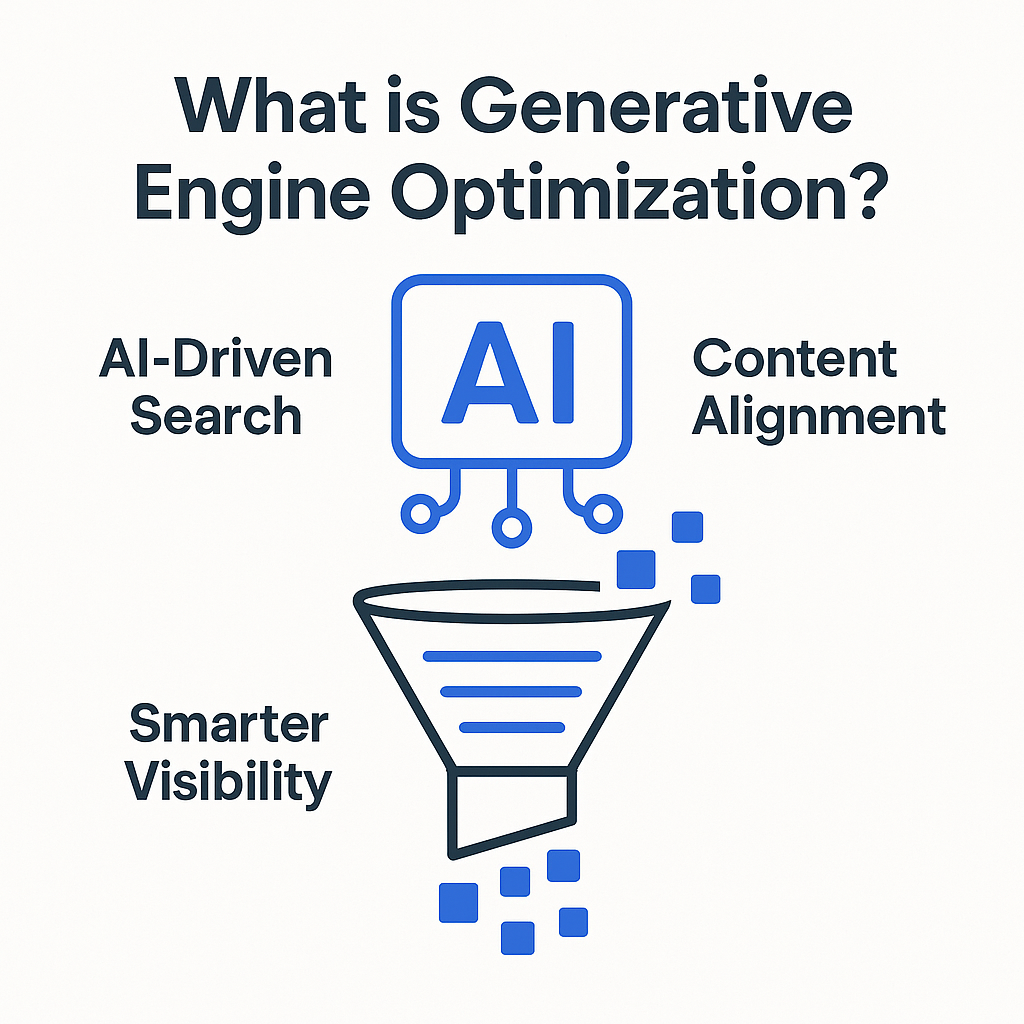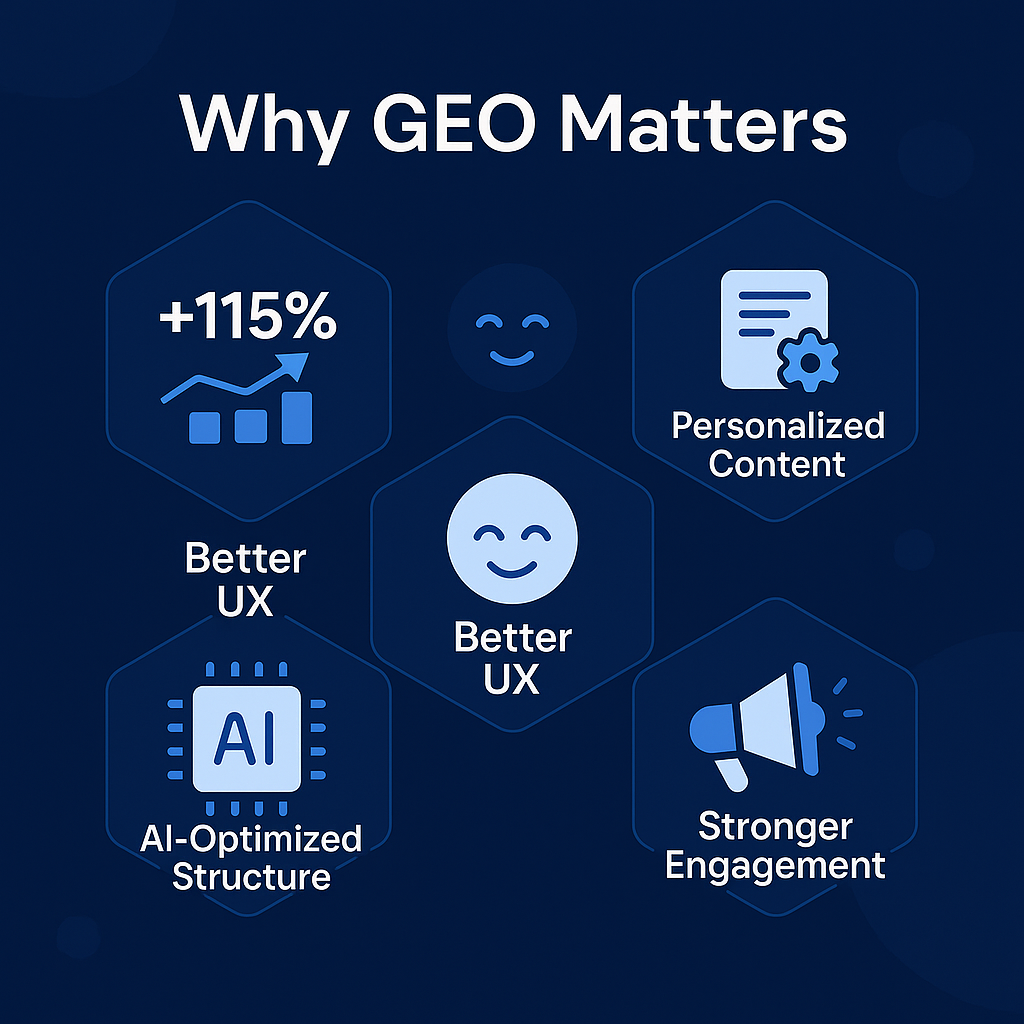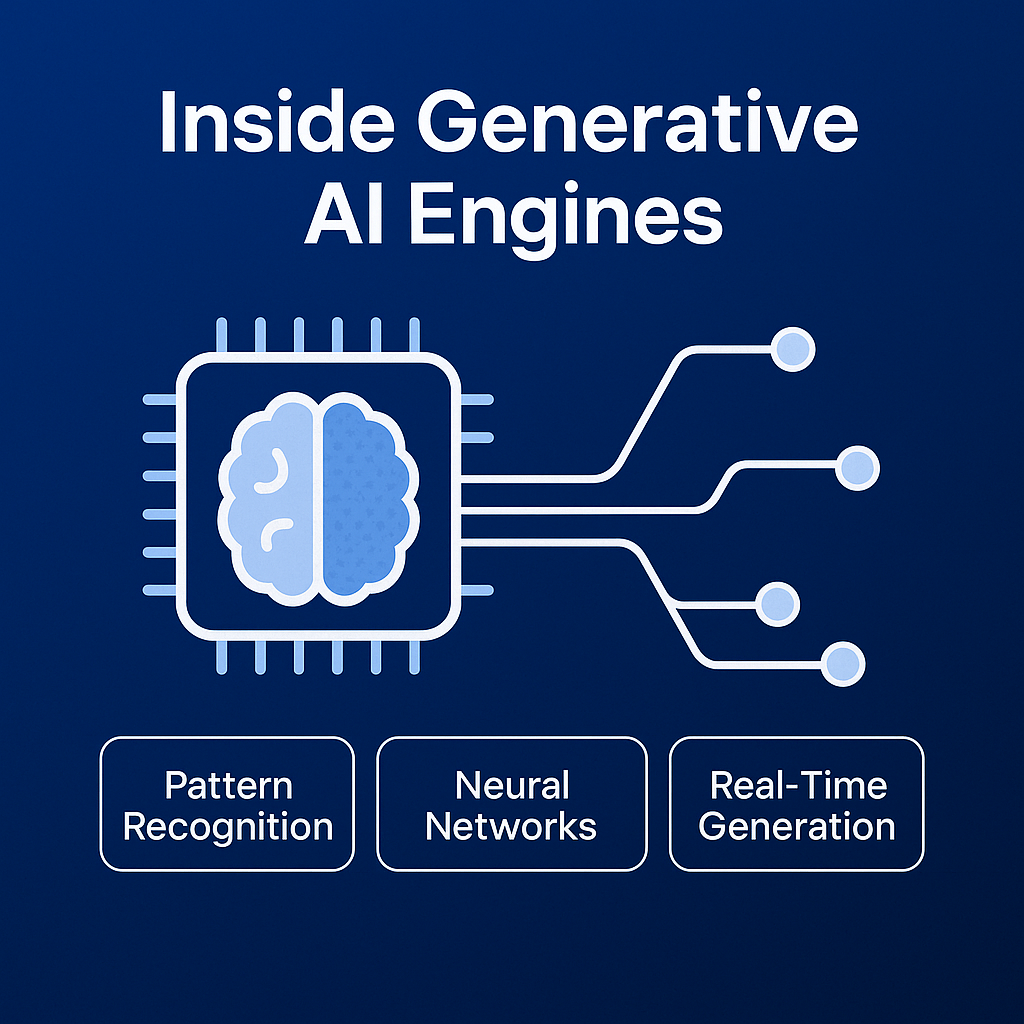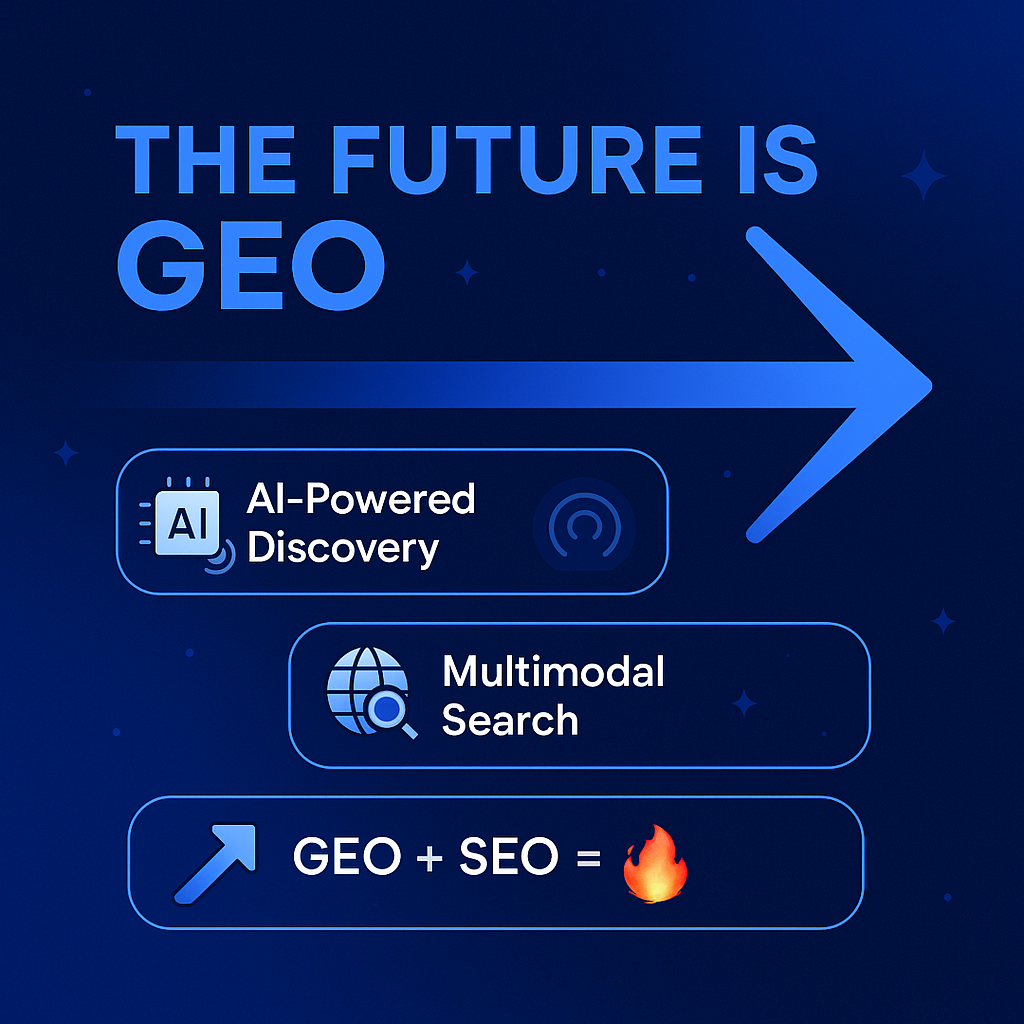
SEO Specialist
.jpeg)
Generative Engine Optimization (GEO) is about optimizing for AI-driven search engines to get your content seen and engaged with. In this guide, find out what GEO is, why it’s important in the age of AI and how to do it to stay ahead in digital marketing.

Generative Engine Optimization (GEO) is a new technique to optimize content for AI-driven search engines. Unlike traditional search engine optimization which is about ranking on search engine results pages, GEO is about aligning content with the complex demands of the ai engine generative AI platforms. This alignment not only gets content more relevant and visible in AI engines but also uses natural language processing to create more engaging and authoritative content.
The goal of GEO is to establish authority and become the go to source for AI generated responses. Doing GEO allows content creators to get more visibility and audience engagement. Properly optimized content with GEO can get more reach and impact, increase source visibility by up to 40%. Content that resonates with audiences and meets the nuanced requirements of AI engines achieves this.
Plus visual and interactive elements can boost engagement even more, making GEO a holistic approach to modern content optimization. As generative AI engines try to give users the most relevant and compelling responses, aligning your content with those criteria means your brand will stand out in the digital landscape.

The benefits of GEO go beyond traditional SEO, more visibility, better user experience and cost effective personalization. By optimizing for AI engines GEO meets users expectations for high quality and relevant content and allows organizations to optimize resource usage and improve return on investment.
Let’s dive deeper into these benefits to see how GEO can change your digital marketing strategy.
One of the biggest benefits of GEO is the massive visibility in AI generated responses. This not only increases brand awareness but also reach. For example smaller businesses can get up to 115% more visibility through effective GEO implementation. This visibility is achieved by focusing on creating relevant and engaging content rather than just traditional keyword strategies.
Top ways to get more source visibility in generative engine responses include citing sources, adding quotes and statistics. Aligning content with AI driven search engines increases the chances of ranking higher in search results, so brands need to adapt to multiple platforms beyond just Google.
Improving keyword targeting through GEO increases the chances of being in search results, gives a big advantage in the competitive digital landscape. This approach means your content will reach a wider audience and resonate more with them.
As user search behavior moves to AI platforms, brands need to make sure their content meets these evolving engagement expectations. GEO prioritizes concise and authoritative content that matches user intent, which improves user experience. This alignment builds credibility and engagement as users find what they are looking for faster and more efficiently.
Creating accurate and comprehensive responses not only improves AI recognition but also user engagement and trust. As the trend for AI generated responses continues to grow, doing GEO becomes more and more important for brands that want to stay competitive.
GEO allows for personalized content delivery, better ROI. AI optimized content has shown to have higher conversion rates, making it a cost effective way to personalize. This efficiency is driven by the ability to tailor content based on advanced machine learning models and data driven insights so user engagement remains high.
Increased user trust in AI responses makes it even more important to optimize content for generative engines. By doing GEO brands can create more relevant and engaging content that resonates with their audience and drives better results.
While both GEO and traditional SEO aim to get more visibility and engagement, their approaches and focus are very different. Traditional SEO is about optimizing websites for higher rankings in search engine results pages, GEO is about making content useful and relevant for AI driven platforms. This complementary relationship between GEO and SEO means a more holistic approach to content optimization.
Integrating traditional SEO techniques like keyword research and high quality content creation with GEO is key to getting the most visibility. By combining these two brands can get better results across both traditional and AI driven search engines.### Similarities in Goals and Strategies
Both GEO and SEO share the same goal of getting more visibility and engagement. They use the same foundational strategies like keyword research and high quality content creation to get visibility. High quality content is key to ranking in generative AI platforms as it improves user experience and chances of being in AI generated responses.
Being in AI responses increases brand awareness and website visits, benefits beyond just ranking. Optimizing for AI driven search engines not only improves organic search traffic but also keeps brands competitive as traditional search traffic declines.
GEO optimizes content for AI driven search engines by:
Authority and credibility of sources play a big role in how AI engines evaluate content, so it’s important to present content in a relevant and engaging way. The GEO process provides precise and comprehensive answers, increases website visibility and user engagement.

Generative AI models use neural networks to identify patterns and structures in existing data and create new content that is contextually relevant and engaging. These models include diffusion models, variational autoencoders and generative adversarial networks (GANs) each with different mechanisms for generating data.
Transformer networks which use self-attention and positional encoding are great for processing sequential data and are ideal for generating high quality text content. Generative AI can automate content creation across multiple modalities including text, images, audio and video, making content creation more versatile.
The quality of generative AI outputs is critical especially in user facing applications where clarity is key. AI algorithms prefer content that covers a topic comprehensively, offers more value to users. Understanding how generative AI engines work allows content creators to better align their strategies to meet the demands of these advanced systems as generative engines prioritize content.
Implementing GEO involves a series of strategic steps to align content with user intent and optimize for AI driven search engines. This process improves content creation by aligning content with user intent so it meets the nuanced requirements of AI engines.Practical steps to implement GEO include research, high quality content creation and content optimization.
Contextual relevance in GEO is determined by how well content aligns with the intent of the user’s query. Successful GEO requires understanding the purpose behind a user’s search query and different intent types. Holistic research involves understanding market, users and competitors and analyzing different content types.
Keyword research tools are essential for finding topics of interest for the target audience. Recommended free tools for starting GEO optimization are AnswerThePublic and Google PageSpeed Insights which helps in finding and incorporating relevant keywords.
AI driven tools helps in content creation for GEO by analyzing data analysis points to generate relevant content, ensuring comprehensive answers that satisfies AI driven search engines and using an ai tool while also using ai powered search engines and ai tools resulting to ai generated results.
AI engines value content that is reliable and comprehensive. To meet these standards content should have data, expert quotes and reputable sources to back up claims. High quality, relevant and engaging content is key to optimization as it makes content resonate with audience and meets the nuanced requirements of AI engines.
Content should prioritize natural answers over keyword stuffing as AI engines prefer conversational content that facilitates better understanding and citation. Focusing on content quality allows brands to get more source visibility and increase user engagement.
GEO prioritizes content that is structured for synthetic summarization, using bullet points and clear headlines to make content readable by AI engines. Organized content is prioritized by generative AI so it’s important to avoid long paragraphs. Clear headings, bullet points and short answers makes content readable and meets the standards for AI interpretation.
Recommended practice for structuring content for AI is to use clear headings, lists and short paragraphs. Ideal paragraph length for AI readability is 2-3 sentences max so content is easily digestible by AI engines.
Optimizing content structure optimizes content and increases chances of being in schema markup AI generated responses.
Technical SEO is important for improving website ranking and user experience to meet the demands of AI driven search engines. A solid technical foundation allows generative AI search engines to crawl, index and deliver website content. Key technical elements to optimize content are:
Slow loading times hurts chances of being featured in AI generated responses. Having technical polish prevents AI from skipping content due to poor performance or accessibility.
Experimentation is key in Generative Engine Optimization to find what works. Experimentation helps brands find the best formats, tone and content types that resonates with audience and meets the requirements of AI engines. But common mistakes can hinder GEO efforts.
The following sections will tackle these common mistakes and provide actionable tips to avoid them so you can implement GEO effectively.
To enhance readability and relevance in your content follow these guidelines for keyword usage:
Including user generated content can diversify your content and create content that adds authenticity and further improves search performance and user engagement.
Continuous adaptation is key for brands to stay visible in an AI driven environment. Balancing traditional SEO with GEO increases overall visibility for brands. Regularly updating SEO strategies helps brands keep up with the ever changing algorithms of search engines so SEO practitioners can adapt for sustained performance and relevance.
Implementing high quality content creation while following SEO best practices is a comprehensive approach to both GEO and traditional SEO. Keeping traditional SEO practices helps brands maximize their reach and effectiveness in both traditional and AI driven search engines.
In-depth content is key to satisfy both user needs and AI algorithms. AI favors content with depth and substance as it provides more value. A 300 word post will struggle against more comprehensive resources as it lacks depth and doesn’t meet the expectations of AI driven search engines.
Creating high quality, substantial content ensures it resonates with audience and meets the nuanced requirements of AI engines. Focusing on depth over quantity increases visibility and engagement in the digital landscape.

GEO will be at the heart of digital marketing strategies moving forward. Future of Generative Engine Optimization is closely tied to large language models and AI. This will change search beyond traditional SEO. GEO answers based on user behavior so more relevant and personalized results, brand recognition and new business opportunities.
Recent studies show that executing Generative Engine Optimization can impact brand visibility in large language models. Adapting to GEO is key to staying relevant and competitive in search engine results so it’s essential to regularly review content’s performance and adjust strategies to adapt to evolving AI search algorithms.
As traditional search traffic declines, GEO ensures brands remain competitive by increasing visibility and engagement through AI driven search engines and traditional search engine formats. Unlike traditional search engines, staying ahead of these trends helps brands maximize their reach and effectiveness in the digital landscape as a leading digital marketing agency. Traditional search engines play a big role in this strategy.
Generative Engine Optimization (GEO) is a powerful technique to increase content visibility and engagement in AI driven search engines. By understanding the unique aspects of GEO and implementing practical steps such as research, high quality content creation and content optimization, brands can increase their reach and impact. Combining traditional SEO with GEO is a comprehensive approach to content optimization, maximizing overall visibility and effectiveness.
As we move forward, GEO will be at the heart of digital marketing strategies, changing search beyond traditional SEO. By staying ahead of these trends and adapting to evolving AI search algorithms, brands can maximize their reach and effectiveness in the digital landscape. Embrace the future of content optimization with GEO and be visible in the era of AI driven search engines.
Generative Engine Optimization (GEO) increases content visibility and engagement by tailoring it for AI driven search engines. This ensures alignment with generative AI platforms.
GEO is different from traditional SEO by creating content that is specifically tailored for AI driven platforms, making it relevant and useful and not just for rankings. This complements traditional SEO by increasing visibility across both types of search engines.
GEO increases visibility in AI responses and user experience by aligning content with user intent. This means cost efficient personalization, higher ROI and user engagement.
Avoid keyword stuffing, not adapting to AI content and prioritizing quantity over quality. By doing so you can improve your GEO.
Research thoroughly to understand user intent, create high quality content, and optimize content structure for AI. This will increase user experience and visibility.